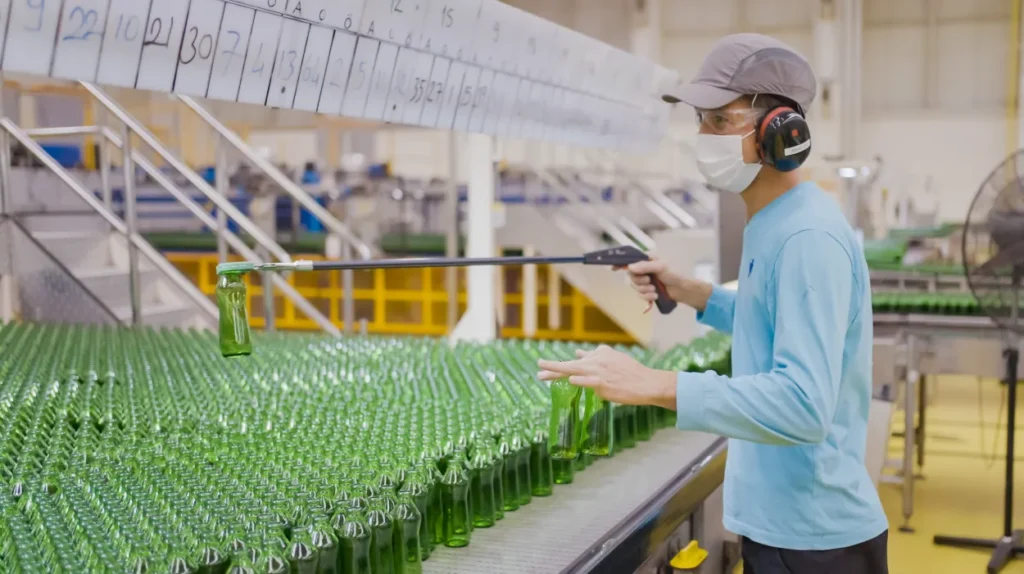The packaging industry has been at the forefront of innovation and environmental discussions for many years, constantly adapting to consumer demands and regulatory standards. One material that stands out in the discussion of sustainability and adaptability is glass packaging, a time-tested solution that carries with it not only a touch of elegance but also an impressive array of environmentally friendly attributes.
Contents
Historical Resilience and Modern Evolutions
Glass has a long-standing history in packaging, having been used for centuries to store and protect products. Despite the advent of alternative materials, the demand for glass bottle packaging remains strong. This is due in part to its non-reactivity which ensures that the contents within remain pure and uncontaminated.
In recent times, the industry has seen a notable evolution in glass packaging. Innovations in design and manufacturing have resulted in lighter yet more durable glass containers, reducing transportation costs and the material’s carbon footprint without compromising its protective properties.
Sustainability and Recycling as Pillars of the Glass Packaging Future
One of the primary reasons for the enduring appeal of glass lies in its environmental credentials. Glass packaging can be recycled indefinitely without loss of quality or purity. The industry is seeing a significant push towards making recycling processes even more efficient, ensuring glass can proudly maintain its position as a sustainable packaging option.
Manufacturers and businesses are becoming increasingly aware of their environmental responsibilities. They are selecting packaging materials that reflect this ethos. A company like Techpack, which operates in the packaging space, acknowledges the need to embrace sustainable practices and materials, ensuring they remain at the cutting edge of the industry.
Innovations in Glass Packaging
As we look into the future of glass packaging, we envisage a continuation of current trends towards innovation. Smart glass packaging that can communicate with consumers and businesses alike is on the horizon. Imagine a world where your bottle not only serves as a container but also as an interactive component of the user experience, imparting essential information about the product, its history, and its environmental impact.
Advancements in glass production technology mean that we can expect even lighter glass bottles with the same, if not improved, durability. This innovation directly translates into lower emissions and energy consumption throughout the product’s lifecycle.
Overcoming Challenges
The glass packaging industry, however, is not without its challenges. The high energy consumption during production and the need to improve collection and recycling rates are areas where substantial progress is needed. Nonetheless, leading packaging companies are investing in research and development to tackle these issues head-on.
Another aspect to consider is the competition from alternative packaging materials. Plastic, for example, often touted for its lightweight nature and lower production costs, presents a continuous challenge. Nevertheless, as consumer sentiment shifts towards sustainability, glass’s eco-friendliness becomes a more significant factor in the decision-making process for businesses and end-users.
Catering to Consumer Preferences
Contemporary consumer trends also bode well for the future of glass packaging. There’s a burgeoning desire amongst consumers for premiumisation, where the tactile and visual quality of packaging enhances the perceived value of the product. Glass, with its superior aesthetic appeal and the ability to maintain the integrity of the contents, is impeccably positioned to capitalise on this trend.
The rise in health-conscious consumers who demand purity in their products also plays to the strengths of glass packaging. Consumers are not just looking at what is in their food and beverages but also how it is packaged. Glass provides a clear solution, free from the concerns of chemical leachates associated with other packaging materials.
The Role of Glass in a Circular Economy
A key component to the future success of glass lies in its role within the concept of a circular economy. This economic system is designed to minimise waste and make the most of resources, a philosophy that glass packaging embodies well. Its capacity for infinite recyclability means that glass can continuously circulate in the economy without losing value or integrity, thereby contributing to a more sustainable world.
Collaboration and Commitment
The industry must work collaboratively to ensure the longevity of glass packaging. Manufacturers, retailers, consumers, and waste management facilities all have a part to play. By committing to using more glass and improving the efficiency of recycling processes, all stakeholders can contribute to a bright future for glass packaging.
Moreover, governmental policies and initiatives that support recycling programmes, as well as the development of new glass technologies, are crucial. They can create an environment that fosters growth and innovation in glass packaging solutions.
The Road Ahead
Looking to the future, it’s clear that glass packaging has a pivotal role to play. With an increased focus on sustainability, technological advancements, and a circular economy, glass can continue to thrive and evolve. It is not just about being a container but about representing a commitment to quality, purity, and environmental responsibility.
The landscape of packaging is experiencing a dramatic shift, and companies such as Techpack are at the forefront of this change. As customers become more environmentally conscious, the demand for packaging solutions that offer both function and form – without compromising the planet – will rise. Glass, with its rich history and bright future, is poised not just to meet these demands but to exceed them, ensuring its place as a cornerstone of packaging for generations to come.
